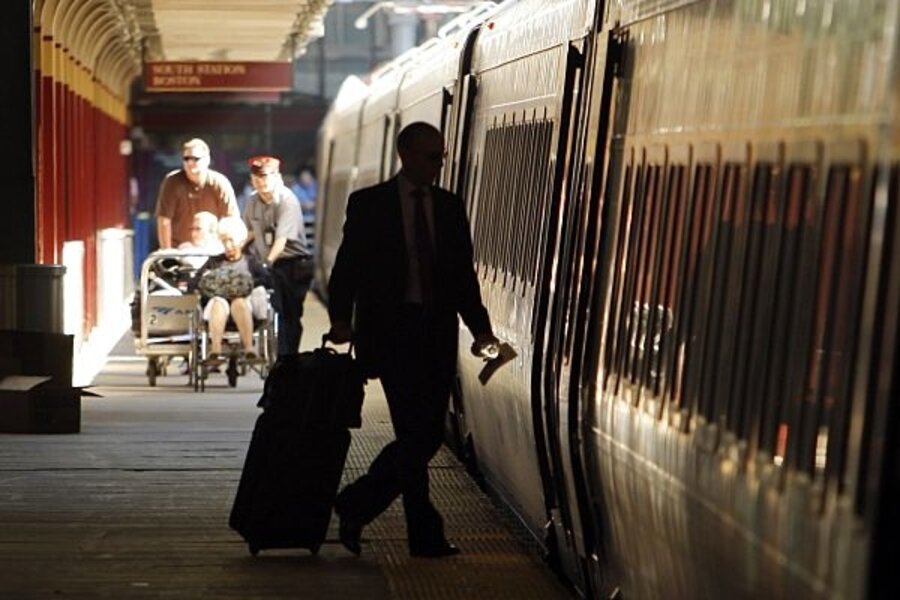High-speed rail: Can it work in the US?
Loading...
The symmetry is nice. A half-century ago, President Eisenhower pushed for interstate highways, which connected America, boosted the economy, and helped give the heave-ho to the nation's passenger-rail system.
On Thursday, President Obama announced he wants to connect America, boost the economy, and help give the heave-ho to the nation's interstate-highway travel with a high-speed passenger-rail system that ...
Hey, wait a minute! Is this back-to-the-future government policy?
A $13 billion downpayment
The president would use $8 billion of the stimulus package plus another $5 billion in future federal budgets to begin laying the foundation for 10 high-speed rail corridors around the nation. (See a map here.)
That's an important start – but not enough to build a single bullet-train system, let alone connect New York to Chicago or California with anywhere else. (Click here to see what it could do.)
The nation's First Commuter, Vice President Joe Biden, made the most impassioned pitch for something that's dear to his heart: "Imagine whisking through towns at speeds over 100 miles an hour, walking only a few steps to public transportation, and ending up just blocks from your destination. Imagine what a great project that would be to rebuild America."
An Acela trip
But here's the deal, Mr. Vice President. I can do that now from Boston to Washington, using Amtrak's Acela, at a cost of $323 and 12 hours, 26 minutes roundtrip. Or I can fly to Baltimore, catch a van or cab to my destination, for about $350 (including $100 for van/cab fare) in slightly half the time (including an hour-plus layover in New York on the return).
The bullet trains of Japan and the TGV superfast trains of France are impressive. But they serve smaller areas that are far more densely populated. A train trip as long as Boston-Washington in Europe would stretch from Paris to nearly the middle of Germany.
Perhaps the administration's system would be far more efficient. But when the rubber meets the road (sorry, a 20th century slip) ... when the steel meets the track, it will have to be a lot more efficient or a lot cheaper than what we have today.





